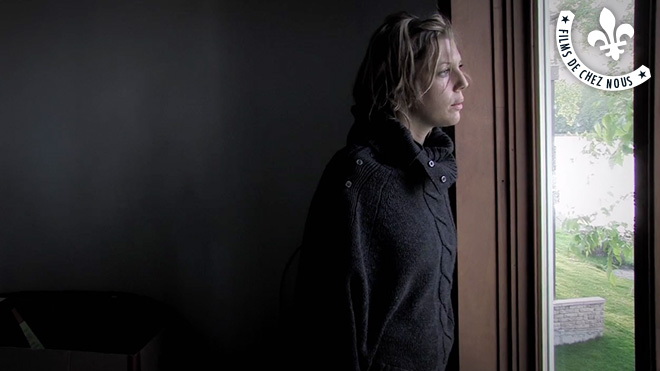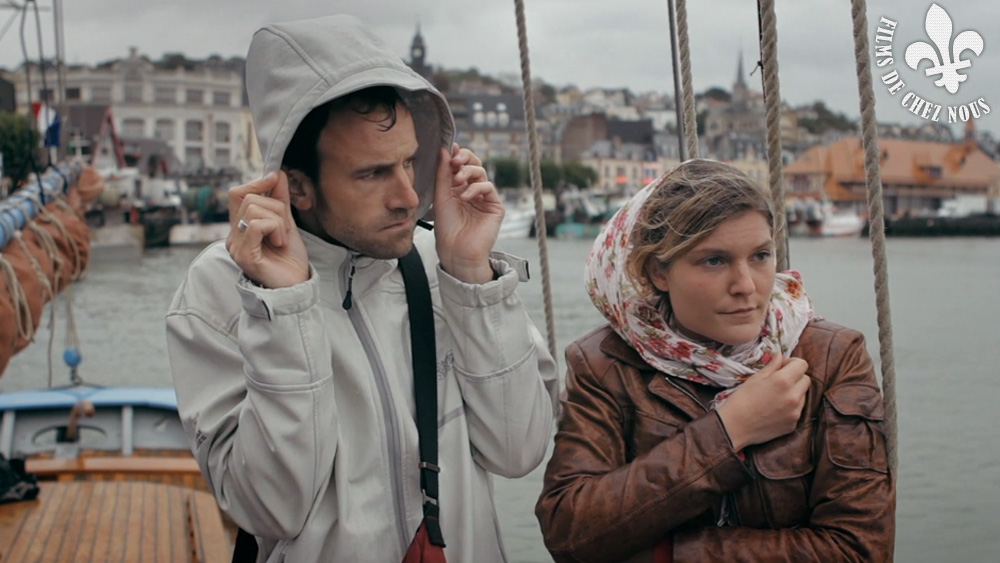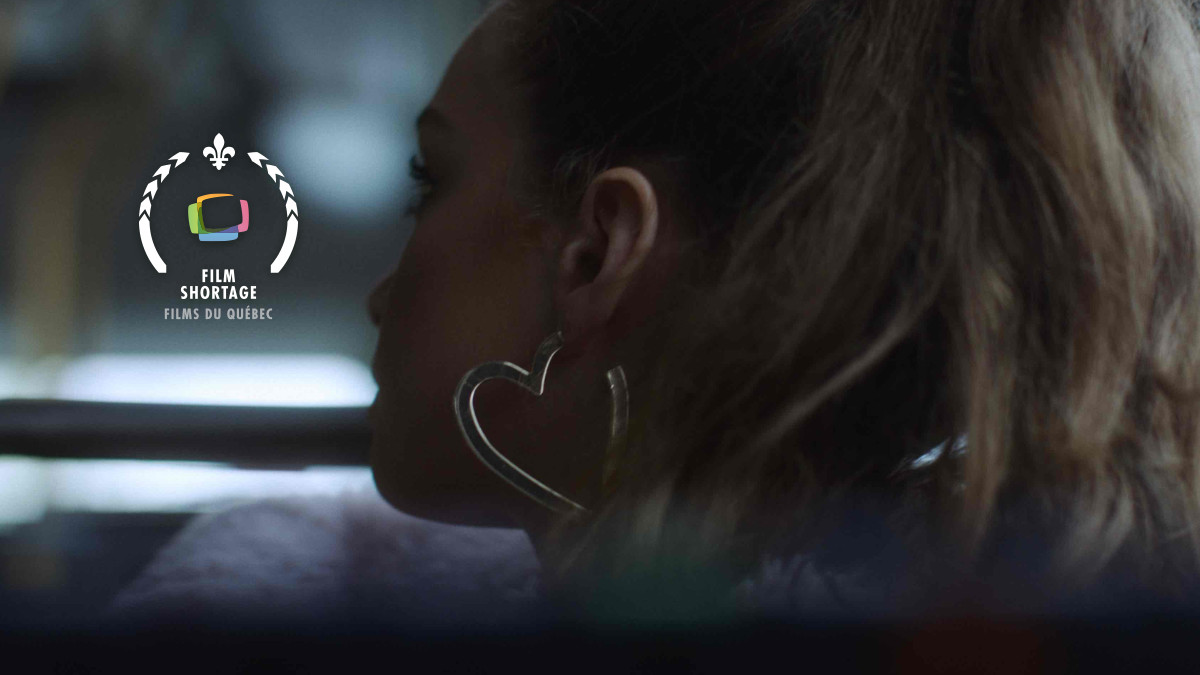The story takes place in a bathroom, where Jeanne has come to take refuge in her bath. Paul, her little brother, breaks her solitude by joining her in the bathroom, while another argument rages between their parents. The children try to escape it by playing their favorite game.
“Le calme de l’eau (Quiet Water)” by Jules Hamdadou is an evocative short film that unfolds within the intimate confines of a bathroom. Jeanne, seeking solace from the chaos outside, retreats to her bath. Her brief moment of peace is interrupted when her younger brother, Paul, joins her, seeking refuge from the escalating argument between their parents. Together, the siblings immerse themselves in their favorite game, creating a temporary sanctuary from the turmoil.
The film beautifully captures the contrast between the serene, enclosed space of the bathroom and the discordant atmosphere beyond its walls. Hamdadou masterfully depicts the children’s quiet resilience and their ability to find comfort and escape in each other’s company. “Le calme de l’eau” is a poignant exploration of familial bonds and the innocent ways children cope with the complexities of their world, highlighting the fragile yet enduring nature of sibling relationships amidst family strife.
What inspired you to set the entire story of “Quiet Water” in a bathroom, and how does this setting enhance the narrative?
Unlike a bedroom, the bathroom is a common, more neutral space, where I believe we all have childhood memories. It’s also a place where we take time for ourselves, where we truly escape since, in a household, people tend to respect privacy more in a bathroom than in a bedroom. This setting allowed me to quickly establish the great complicity between the two children, as Paul only half-disturbs Jeanne during an intimate moment. I wanted to create a warm space, a sort of alternative cocoon that brings them together.
The relationship between Jeanne and Paul is at the heart of the film. How did you approach developing their bond and contrasting it with their parents’ conflict?
In the relationship between Jeanne and Paul, I really wanted to show the modesty and complicity between brother and sister. I wanted to create a strong contrast between the awkward and modest relationship of the two children and the violent behavior of their parents. When the parents shout behind the door without listening to each other, the two children understand each other with a glance and instinctively protect each other.
Water often symbolizes calm and refuge. How did you use this symbolism in the film to reflect Jeanne’s emotional state?
This idea of refuge and calmness in water is something I have always felt and still seek regularly today. I wanted to lead the film to this sensation. The bath and holding her breath allowed Jeanne to achieve ephemeral calm, and I found it even stronger that she achieves it through her relationship with Paul.
The children play a game to escape their reality. What themes did you want to explore through their imaginative play?
With this film, I really wanted to talk about love and sibling bonds as a shield. The game and the complicity that bond the two children constitute their armor. They save each other.
The film deals with strong emotional tension. How did you guide the actors, particularly the children, to convey these complex emotions authentically?
To convey the characters’ emotions, there were two essential points. The first was that Billie Blain and Lazare Le Rolland, who played Jeanne and Paul, were very close even before shooting. Billie was used to big productions, whereas Lazare had never acted, not even in theater. This has automatically created a difference in experience, putting them in a “little brother – big sister” dynamic. Billie took him under her wing from their first meeting until the shoot. The second point is that, during the takes, the children played the sequence in complete silence, without knowing the parents’ dialogues or faces. In fact, we had neither actors nor recordings of the argument for the shoot. I only gave them a few details about the argument’s actions. Only Anouk, my first AD, knocked on the door when I’ve asked her, to get their reactions at key moments. I wanted to avoid them knowing the argument like a piece of music and anticipating it. They had to imagine the off-screen action in their heads, especially Lazare at the end. I only guided his imagination to get the most intense look possible. The two actors perfectly understood my intentions and the emotions that the characters were going through, so I just had to adjust them slightly. They were brilliant.
In a confined environment like a bathroom, what techniques did you use to maintain visual interest and keep the audience engaged?
Confining the film to the bathroom was the main production challenge but also the film’s strength. After searching for locations throughout the Parisian area, we finally settled on building a set in a studio, which we constructed ourselves with the cinematographer, Grégoire Lobut, and the set design team supervised by Roxane Pardo, the set designer. Since we only had one set, it was essential to be able to tell a story through the set design and lighting, in addition to having space for framing. Thanks to the studio, we were able to achieve very precise and smooth movements, which are very difficult to implement in a normal bathroom, often too small. However, I wanted the shot composition to be quite simple to leave room for the rhythm and movements of the actors. Finally, I believe the major asset of the film lies in the treatment of the parents’ off-screen sound, which brings the entire household to life without leaving the children’s world.
How did the sound design contribute to the atmosphere, especially considering the background noise of the parents’ argument?
The parents’ off-screen argument provides the film’s entire context. It’s thanks to the constant presence of the parents in the background that we understand the children’s relationship and their daily life. Like Jeanne, I wanted the audience to be relieved not to hear them for a moment. I believe that the sound atmosphere, like the set, really helped accentuate the complicity between the two children. They are very close, both in the image and in sound.
As this is your first short film, what were the biggest challenges you faced during production and what did you learn from the process?
For a first film, I was lucky to be very well supported, from casting to post-production. So, from a technical point of view, I think the biggest challenge was to build the bathroom with recycled and second-hand decor elements. But from a more personal point of view, I was confronting fiction for the first time, so I really wanted to succeed in conveying emotions.
What do you hope the audience takes away from the film, particularly regarding the depiction of sibling relationships and family dynamics?
At the Itinérances Festival in Alès, where the film was screened in 2023, I had the opportunity to discuss the film with middle school classes. One student was shaken; she felt understood and, through the film, she was able to open up about her family situation for the first time to her friends. I thought I had succeeded because the film helped her in an important moment in her life. So ultimately, what I hope people takes away is that we need to be there for each other, whether we are modest or not. I also wanted to denounce the destructive behavior of some parents, their physical and verbal violence. Behind the doors, children hear, listen, and understand.
Can you tell us which short films directly inspired this film, if any, and which short films you consider your favorites?
I don’t think I was inspired by a short film for this one. In fact, it was while developing this film that I started watching many and attending festivals. “Three Grains of Coarse Salt” by Ingrid Chikhaoui, “Nest” by Hlynur Pálmason, or “An Unlived Story” by Ramazan Killiç are among those I particularly like.




